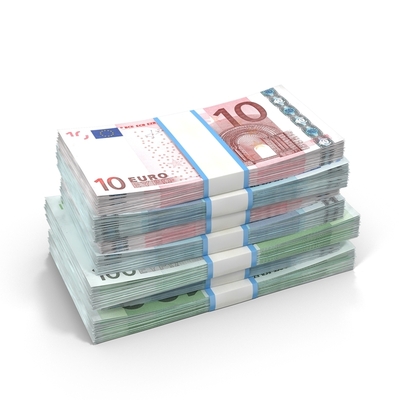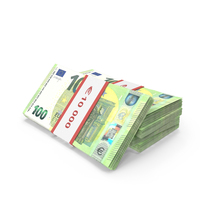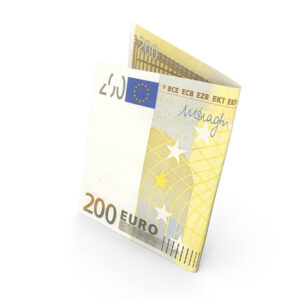Introduction
As the official currency of the Eurozone, the Euro has established itself as a symbol of economic unity and integration in Europe. To navigate the Euro currency effectively, it is crucial to understand the diverse range of Euro denominations, including banknotes and coins. In this comprehensive blog post, we will explore the intricacies of Euro denominations, from their design and security features to their historical significance and practical usage. Join us as we delve into the fascinating world of Euro banknotes for sale and coins, uncovering their unique attributes and uncovering their role in everyday transactions.
Euro Banknotes: A Tapestry of Art and Security .
Euro banknotes are renowned for their artistic flair and advanced security features. We will delve into the design elements of each Euro banknote denomination, from the visually captivating €5 note to the high-value €500 note. Discover the historical figures, architectural motifs, and cultural symbols depicted on these banknotes, each representing a significant aspect of European heritage. Furthermore, we will explore the state-of-the-art security features integrated into Euro banknotes, such as holograms, watermarks, and raised printing, which ensure their authenticity and safeguard against counterfeiting.
Euro Coins: Unveiling Eurozone’s Unique Currency .
Euro coins, available in various denominations, possess distinctive characteristics that reflect the cultural diversity of Eurozone countries. We will examine the shape, design, and composition of each coin, from the copper-colored €1 and €2 coins to the smaller denomination coins. Discover the fascinating national designs on the reverse side of Euro coins. Each encapsulating the heritage and identity of a specific country. Additionally, we will explore the technological aspects of Euro coins, such as bi-metal construction and edge inscriptions, which enhance both security and ease of use.
Historical Significance: Tracing the Evolution of Euro Denominations.
Euro denominations carry historical significance that highlights the shared heritage and aspirations of the European Union. We will trace the evolution of Euro banknotes and coins, from their introduction in 1999 to the subsequent design changes and security enhancements. Explore the reasoning behind the selection of historical figures and architectural motifs. And how they embody the ideals of unity, cooperation, and cultural heritage. Additionally, we will discuss the impact of the Euro currency on economic integration, trade facilitation, and the everyday lives of European citizens.
Practical Usage and Exchange .
Understanding the practical aspects of using Euro denominations is vital for both residents and visitors of Eurozone countries. We will provide valuable information on where and how to obtain Euro banknotes and coins. Including currency exchange services and ATMs. Additionally, we will address common questions regarding acceptance, legal tender status, and handling Euro denominations in various transactions, such as retail purchases, dining out, and travel-related expenses. Practical tips and advice will ensure a smooth and efficient experience when using Euro currency.
Frequently Asked Questions (FAQs) and Answers:
FAQ: What are the different Euro banknote denominations available?
Answer: Euro banknotes are available in several denominations: €5, €10, €20, €50,€100, €200, and €500. Each denomination represents a different value, enabling a range of transactions within the Eurozone.
FAQ: Are Euro banknotes the same in all Eurozone countries?
Answer: Yes, Euro banknotes have the same design and characteristics in all Eurozone countries. However, each country’s national side of the coins features a unique design, showcasing their cultural heritage.
FAQ: How can I differentiate between genuine Euro banknotes and counterfeits?
Answer: Euro banknotes incorporate various security features, such as holograms, watermarks, raised printing, and security threads. It’s essential to familiarize yourself with these features and feel for their textures to ensure the authenticity of the banknotes.
FAQ: Can I use Euro coins in all Eurozone countries?
Answer: Yes, Euro coins can be used in all Eurozone countries. Regardless of the country of issuance, Euro coins are accepted as legal tender throughout the Eurozone.
FAQ: Are there any limitations on using high-denomination Euro banknotes?
Answer: While there are no specific limitations on using high-denomination Euro banknotes, it’s important to note that some businesses may have difficulty providing change for larger notes. It’s advisable to carry a mix of smaller denominations for convenience.
FAQ: Where can I exchange Euro banknotes and coins?
Answer: Euro banknotes and coins can be exchanged at banks, currency exchange offices, and sometimes at post offices. It’s recommended to check exchange rates and any applicable fees before conducting the exchange.
FAQ: Can I use Euro denominations outside of the Eurozone?
Answer: While the Euro is not the official currency outside the Eurozone. Some international businesses or establishments may accept Euro banknotes for payment. However, it’s advisable to check with the specific location beforehand.
Conclusion
Euro denominations, comprising banknotes and coins, symbolize the unity and cultural diversity of the Eurozone. The captivating designs, advanced security features, and historical significance embedded within Euro banknotes and coins make them both aesthetically pleasing and highly secure. By understanding the unique attributes and practical usage of Euro denominations, individuals can navigate the Euro currency system with confidence and appreciate the collective heritage of Europe. Whether conducting business or exploring the vibrant cities of the Eurozone, Euro denominations facilitate seamless transactions and serve as a tangible representation of a unified Europe.













"Hi, I’m Lisa from Charlotte. Aaron’s customer service at buydollarbills.com was superb. He was very helpful and made sure my…
“I bought a batch of real dollar bills, and they are of excellent quality, each featuring a unique serial number.…
I recently purchased a set of real dollar bills, and I couldn't be more impressed. The quality is outstanding—each bill…
“Perfect transaction for Dollar bills. Aaron Walker’s customer service was excellent and made the whole process seamless. 💶👏”
“I’m very impressed with the real dollar bills I received. Each bill is in mint condition and has a unique…
"Fantastic service for Euro bills! Aaron was very professional and ensured my order was processed efficiently. 💶🌟🌟🌟🌟🌟"
"Superb quality Euro bills and outstanding support from Aaron. He was very attentive and resolved my concerns quickly. 💶🌟🌟🌟🌟🌟"
"Great experience with Euro bills. Aaron’s customer service was very responsive and made sure I got the best product. 💶🌟🌟🌟🌟🌟"
"High-quality real dollar bills and excellent customer service from Aaron. His assistance was key to a smooth transaction. 💵🌟🌟🌟🌟🌟"
"Very pleased with the real dollar bills. Aaron’s customer service was outstanding—he made the process effortless and enjoyable. 💵🌟🌟🌟🌟🌟"
"Ordered Euro bills and had a smooth experience. Aaron’s support was incredibly helpful, and the bills were perfect for my…
"Great experience with buying Euro bills. Aaron was very professional and ensured my order was handled efficiently. 💶🌟🌟🌟🌟🌟"
"High-quality real dollar bills and excellent customer service from Aaron. His assistance was key to a smooth transaction. 💵🌟🌟🌟🌟🌟"
"Euro bills were perfect for my project. Aaron provided fantastic customer support and made sure everything went smoothly. 💶🌟🌟🌟🌟🌟"
"Excellent service for Euro bills! Aaron was very helpful and made sure my order was processed quickly and accurately. 💶🌟🌟🌟🌟🌟
"Very satisfied with the real dollar bills I ordered. Aaron’s support was exceptional—quick, friendly, and very helpful. 💵🌟🌟🌟🌟🌟"
"Hi, I’m Laura from Sacramento. Had a smooth experience with buydollarbills.com. Aaron’s customer service was exceptional—he was very helpful and…
Aaron at buydollarbills.com provided excellent service! 💵 His knowledge and customer care made the process of buying collectible bills smooth…
Aaron provided fantastic service at buydollarbills.com! 💵 His detailed advice and prompt responses made buying collectible bills easy. 💰 Aaron’s…
Aaron’s customer service at buydollarbills.com was exceptional! 💵 He offered clear explanations and guidance throughout the buying process. 💰 Aaron’s…
Aaron’s service at buydollarbills.com was excellent! 💵 He was knowledgeable and patient, helping me with all my questions. 💰 Aaron’s…
“Fantastic quality Dollar bills and Aaron White’s support was amazing. Everything went smoothly, and I’m very satisfied! 😍💶”
"Aaron’s support at buydollarbills.com was excellent. He was very attentive to my needs and made sure my dollar bills were…
Aaron at buydollarbills.com provided outstanding service! 💵 He was very helpful and provided great advice on selecting the right bills.…
I had a great experience with Aaron at buydollarbills.com! 💵 His service was top-notch, and he provided clear, helpful information…
Aaron provided fantastic service at buydollarbills.com! 💵 He was very knowledgeable and answered all my questions with patience. 💰 Aaron’s…
"I’m very happy with buydollarbills.com. Aaron’s customer service was top-notch, addressing all my queries and ensuring my order was perfect.…
"I’m thrilled with buydollarbills.com! Aaron in customer service was exceptionally helpful, and the quality of the dollar bills surpassed my…
Excellent service from buydollarbills.com! Aaron answered all my questions promptly and with great patience. The dollar bills arrived quickly and…
"Buydollarbills.com is my go-to for collectible bills. Aaron's customer service is outstanding—friendly, efficient, and very knowledgeable. The bills always exceed…